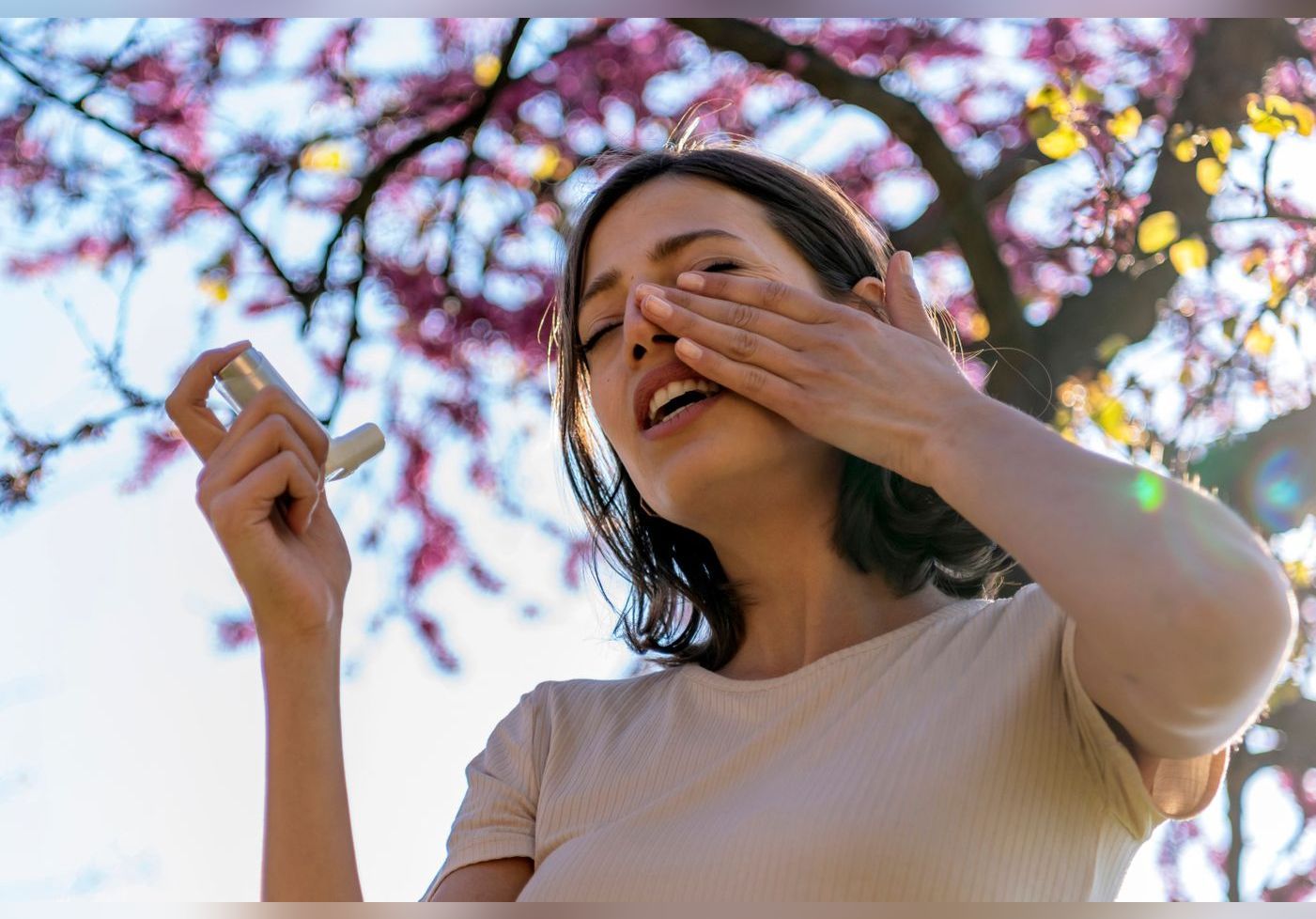Indispensable: stop the allergic reaction
This is the number one goal! Your allies: antihistamines, which block the action of histamine, one of the main mediators of allergic reactions.
In practice Antihistamines are taken orally or topically at the first sign of the allergy. “If we wait, the treatment will be less effective”, underlines Dr Ruth Navarro, allergist, member of the board of directors of the French Allergology Society. They are used for a few days continuously, if necessary by combining the two forms, then the treatment is reduced to control the allergy. “Some patients continue oral intake every other day; others use them on demand when symptoms reappear or as prevention if they think they are exposed ”, continues the expert.
In tablets Easy to use (once a day), they act on both rhinitis and conjunctivitis. They have a reputation for falling asleep, but the new generation active ingredients (Aerius, Clarityne, Inorial, Kestin…) do not or little drowsiness. “If this is still the case, we can try another molecule of the same class or opt for local administration”says Dr Navarro.
As a nasal spray or eye drops In these forms, antihistamines have a targeted, nasal (Allergodil spray) or ocular (Zalerg, Levofree eye drops, etc.) action. Their strengths? They do not cause drowsiness (at recommended dosages!) And act within minutes of administration. However, they should be used at least twice a day.
Self-medication side Certain antihistamines sold without a prescription, in tablets (Alairgix cetirizine, loratadine…) and in eye drops (AllergiFlash), allow the symptoms to calm for a few days, the time to review the situation with the doctor.
Systematically: wash the nose and eyes
Of course, nasal or eye wash products may seem restrictive, but they represent a simple solution to eliminate the allergens that are deposited on the surface of the mucous membranes. “First, they soothe by reducing local inflammation. Then, they prepare the action of eye drops and anti-allergic sprays, which will only be more effective ”, observe le Dr Navarro.
In practice We use the products at least morning and evening “And before each administration of an antiallergic, whether it is eye drops or a nasal spray”, insists the specialist.
Which product to choose? The youngest baby’s saline pods are perfect for washing eyes and nose. Sea water is suitable for nasal hygiene. If it is enriched with magnesium, it is even better, because this trace element allows to regulate the immune function. Marine hypertonic solutions are preferable in case of a stuffy nose.
Self-medication side Avoid rinsing your eyes with antiseptic eye solutions (Dacryoserum, Dacryum, etc.), which can be aggressive over long periods of time.
If necessary: use corticosteroids
Corticosteroids are anti-inflammatory drugs that affect the different levels of the allergic reaction, hence their interest. In seasonal allergy, they are mainly used as a nasal spray (Avamys, Béconase, Flixonase…). “These drugs are more effective than antihistamines”says Dr Navarro. They act on rhinitis, in particular nasal obstruction, but also on eye allergy – the nasal cavities actually communicate with the lacrimal passages. And, overall, they significantly improve the quality of life of allergic patients.
In practice“If the symptoms are painful from the outset or become so, do not hesitate to quickly take the prescribed corticosteroid”, advises the specialist, who recommends continuing the treatment for a few days, or even several weeks if necessary. Knowing that it can take two to three days to be fully effective, it is advisable to combine it with an oral antihistamine at the start. Main contraindications: the appearance of oral herpes or a tendency to bleed from the nose.
Self-medication side A nasal corticosteroid is available without a prescription (Humex hay fever with beclometasone) and can help while waiting for medical advice.
Always useful: calm down with a basic treatment
Among the treatments for allergy, some act on the mucous membranes by inhibiting the release of chemical mediators (histamine and other inflammatory agents) of the allergic reaction. This is the case with sodium cromoglycate, available without a prescription and which is used nasally (Cromorhinol, Alairgix sodium cromoglycate…) or ocular (Opticron, Cromabak, AllergoComod…).
Recognized for its good tolerance, this molecule is recommended throughout the allergic period. A downside: its effectiveness is lower than that of antihistamines, especially by the nasal route. The eye drops form, on the other hand, helps to stabilize the symptoms of allergic conjunctivitis.
In practice By nasal or ocular route, cromoglycate should be used several times a day and every day for optimal action. “Sometimes you have to combine the nasal spray with an oral antihistamine that you take for a few days if the symptoms become too troublesome”, warns Dr. Navarro. Eye drops can be effective on their own if the eye signs are mild, or in conjunction with an antihistamine.
Self-medication side Be careful to choose the eye drops in single doses or in a bottle without preservatives. Indeed, the latter are irritating to allergic eyes.
Mark your calendars!
Skin tests (or “prick tests”), carried out with an allergist, make it possible to know precisely the pollens responsible for the allergy. We can then anticipate and scrutinize their arrival by consulting the pollen calendar on pollens.fr and / or by downloading an application which provides information almost in real time of periods and areas at risk (Pollen Alerts, I-Pollen, etc.).
The goal? Start the prescribed treatments as soon as the pollens in question are present or if you go to a risk region.
> Also to discover: Heart failure: how to spot it and live with it
–


